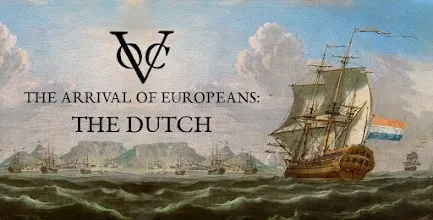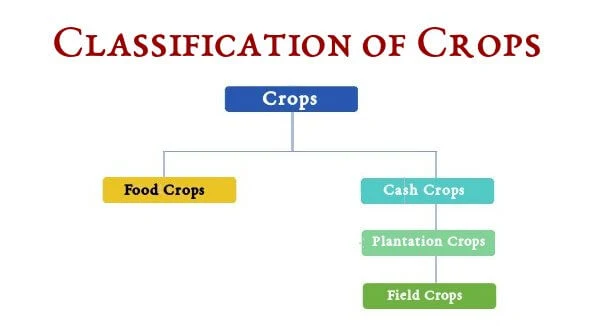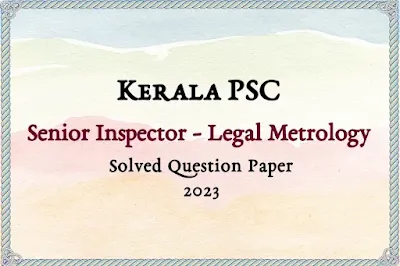The Dutch conquered the Portuguese forts on the Malabar coast five years after acquiring Ceylon from the Portuguese in 1656, in order to create a Dutch monopoly on the spice trade.
Let us have a look at how the Dutch influenced the political landscape of Kerala, the battles they fought, their important contributions, and so on for the Kerala PSC examinations.
Basic Facts
- The second foreign power to arrive in India – The Dutch.
- The second European force that came to India – The Dutch.
- The Dutch came to India in – 1595.
- The Dutch are commonly known as – Lanthakkar.
- Religion – Protestant.
- The first Protestant country to establish trade relations with India – The Dutch.
- The Dutch East India Company was founded in the year – 1602 (March 20).
- also known as United East India Company of the Netherlands and VOC.
- First joint-stock company in the world – The Dutch East India Company.
- The first multinational corporation in the world – The Dutch East India Company.
- The headquarters of the Dutch East India Company was at – Amsterdam.
- First Dutch Factory In India – Masulipatnam (Andhra Pradesh, 1605).
- Major Dutch Factories In India – Kochi (1663), Karaikal, Pulicat, Chinsur, Bimlipatam, Surat.
- The headquarters of the Dutch territories in Kerala – Kochi.
- The first Dutch Admiral to reach Kerala (Calicut) – Admiral Steven Van Der Hagen.
- Name the king who signed a commercial arrangement with the Dutch East India Company for the first time in India – Zamorin of Kozhikode (1604).
- The Dutch captured Kollam in – 1658.
- From the Portuguese.
- Name the Dutch admiral who defeated the Portuguese – Admiral Raiclop Van Goins.
- The Dutch captured and conquered Quilon and Cranganur in – 1661.
- The Treaty of Azhikode (1661) was signed between – Zamorin of Kozhikode and the Dutch.
- The treaty by which the Dutch established their monopoly on pepper trade – Treaty of Venad (1662).
- The year in which the Dutch captured Kochi from the Portuguese was – 1663.
- The battle put an end to the Portuguese rule in Kerala.
- The fort captured by the Dutch in 1663 – Fort Angelo.
- The Vettam War of succession of 1691 was fought between – Zamorin in alliance with the Dutch and the Vettam King.
- The fort built by the Dutch in the 18th century at Guruvayur – Chettuva Fort / Fort William (1714).
- The Chettuva Fort was completed in – 1717.
- First leprosy sanatorium in Kerala – Pallipuram (Kochi).
- The first leprosy sanatorium in Kerala was built by – The Dutch (1728).
- Name the Forts purchased by Dharmaraja from the Dutch in 1789 – Kodungallur Fort and Pallipuram Fort.
The Dutch & The Travancore
The real game between the Dutch and the Travancore began in 1729, when Anizham Thirunal Marthanda Varma ascended the throne of Travancore and defeated his scheming Nair aristocratic lords, the 'Ettuveetil Pillamar', by building a large army of 50,000 soldiers and began the annexation of nearby territories.
In 1734, Marthanda Varma annexed the kingdom of Kayamkulam and marched on to another, Quilon (now known as Kollam), a prominent port and the gateway to the spice trade, threatening the status quo.
The Dutch were alarmed and chose to protest against Marthanda Varma, resulting in the Travancore-Dutch dispute, which started as a rhetorical duel.
Gustaff Willem Van Imhoff, the Dutch governor of Ceylon, met with Marthanda Varma and threatened to attack Travancore.
Following these heated arguments, the battle drums began to pound. The Dutch army in Malabar later waged war on Travancore, deploying troops from Ceylon.
Battle of Colachel (1741)
'A disaster of the first magnitude for the Dutch, the battle of Colachel shattered for all time their dream of the conquest of Kerala'
– Historian, Prof. A. Sreedhara Menon,
A Survey of Kerala History
- The year in which the Battle of Colachel took place was – 1741 (August 10).
- The naval Battle of Colachel was fought between – The kingdom of Travancore and the Dutch East India Company.
- The Dutch were defeated by Marthanda Varma in the – Battle of Colachel.
- The Prime Minister who helped Marthanda Varma in the Battle of Colachel to defeat the Dutch – Ramayyan Dalwa.
- The Commander-in-Chief of Marthanda Varma in the Battle of Colachel – Thanu Pillai.
- The first Asian kingdom to defeat a European power – The Travancore Kingdom.
- The first Asian king to defeat a European power – Anizham Thirunal Marthanda Varma
- Reason for the Battle of Colachel – Annexation of neighboring kingdoms like Elayadathu Swarupam, and Kayamkulam by Marthanda Varma.
- The Dutch naval officer who was captured alive by the army of Travancore – Captain Eustachius De Lannoy (August 14, 1741).
- The Dutch captain who surrendered to Maharaja Marthandavarma after the Battle of Colachel – Captain De Lannoy.
- Who was known as the Valiya Kappithan / Great Commander of Travancore – Captain De Lannoy.
- Name the foreign national who later became the Commander-in-Chief of Travancore – Captain De Lannoy.
- The commander who trained the Travancore army in European tactics of war and discipline, equipped with musketry and cannon was – Captain De Lannoy.
- served the kingdom for 37 years.
- The term 'Olakkal–sheelakkal' ( by Capt. De Lannoy) was believed to be used to train the Nair forces of Travancore who found it difficult to accustom themselves to the 'left-right-left' drill of the west.
- Travancore state army was later integrated into the Indian Army and became the Madras Regiment's 9th Battalion.
- De Lannoy Memorial is in – Udayagiri Fort (Kanyakumari).
- Udayagiri fort was built by – Venad King Veera Ravi Varma.
- Renovated by – Marthanda Varma.
- Colachel Day – July 13.
Treaty of Mavelikkara
- Treaty of Mavelikkara was signed on – August 15, 1753.
- The Treaty of Mavelikkara was signed between – Anizham Thirunal Marthanda Varma & the Dutch.
- The treaty that caused the decline of Dutch power in India – The Treaty of Mavelikkara.
Impact of the Battle of Colachel
The Dutch rule in Kerala came to a complete standstill with the battle of Colachael and the Treaty of Mavelikkara.
While Marthanda Varma on the other hand reigned in the arrogance of Ettuveetil Pillamar and eventually regained the monopoly of the pepper trade.
Vettam (Vettoor) War of succession (1691)
Even though the Kochi came under Dutch rule, the enmity between the King of Kochi and Zamorin of Kozhikode didn't end.
Meanwhile, a civil war started within the Kochi, when in 1689, the decision to accept part of the Pazhoor branch of royalty into the Cochin royal line. Chieftains opposed to the adoption vowed to challenge the king, asking that the adoption must be from the Vettathu Nadu branch of Cochin aristocracy.
Vettom's rulers (also known as the Tanur Swaroopam, Malappuram) were Portuguese allies, and there was already a dispute between the Tanur Kingdom and Zamorin of Calicut.
Tanur's rulers were the first Calicut vassals to rise up against the Zamorin, with Portuguese support.
So, taking advantage of this situation Zamorin in alliance with the Dutch came forward to "help" the Cochin kingdom and waged a battle with the Vettam king.
The allied force vanquished the King Vettam. To thank the Zamorin for his assistance, the Dutch offered him the Chettuvaa region as a present.
This move very much irked the King of Kochi, but he remained silent because of the Dutch army and so the saga of enmity between the Zamorin and King of Kochi continued.
Major Dutch Contributions to Kerala
Out of all the contributions that the Dutch made in Kerala, the Hortus Malabaricus is considered as the greatest of all.
Hortus Malabaricus
- Name the treatise on the medicinal plants of Kerala prepared by the Dutch – Hortus Malabaricus.
- Meaning – Garden of Malabar.
- Written in – Latin.
- Prepared under the leadership of – Admiral Hendrik Adriaan Van Rheede.
- Published from – Amsterdam, the Netherlands.
- Year of publication of Hortus Malabaricus – 1678 - 1703.
- Hortus Malabaricus was published in twelve volumes (500 pages each) between 1678 and 1703.
- The book which is known as the 'Keralaramam' – Hortus Malabaricus.
- First Book Printed in Malayalam script in Kerala – Hortus Malabaricus.
- The first word printed in Malayalam script – തെങ്ങ്.
- The person who helped Admiral Van Rheede to publish the Malayalam script of Hortus Malabaricus was – Emmanuel Carneiro.
- The first tree mentioned in the Hortus Malabaricus is – Coconut tree.
- Last tree mentioned in Hortus Malabaricus – Banyan tree.
- Hortus Malabaricus contains – 742 plants with 791 illustrations.
- The Illustrations of Hortus Malabaricus were done by – John Matthews.
- The Carmelite priest who assisted in the writing of Hortus Malabaricus – John Mathews / Father Mathews / Mathaeus of St. Joseph’s Monastery at Varapuzha.
- The Malayali Ezhava physician who helped in the writing of Hortus Malabaricus – Itti Achuthan.
- Itti Achuthan Memorial Kuryala – Kadakkarappally (Alappuzha).
- Who recommended Itti Achuthan for this task – Vir Kerala Varma, the king of Cochin.
- Name the three Gauda Saraswats Brahmins who helped in preparing the Hortus Malabaricus – Appu Bhatt, Ranga Bhatt & Vinayaka Bhatt.
- Who was the assistant translator in the writing of Hortus Malabaricus – Emmanuel Carneiro.
- Hortus Malabaricus was translated into English & Malayalam by – Dr. Kattungal Subramaniam Manilal.
- Publication of the Malayalam edition of Hortus Malabaricus was led by – the University of Kerala.
Other Dutch contributions:
- Fabric dyeing,
- Salt Manufacturing,
- The spread of Western science in India,
- The scientific method of coconut farming and distribution of better seedlings.
- Bolgatti Palace (1744), the official residence of the Dutch Governors in Kerala.
- Built Leper Sanatoriums at Pallipuram and Vypin.
Famous Works on Dutch Occupation in Kerala
- By Sweat and Sword – K.K. Nair.
- The Dutch power in Kerala – M.O. Koshy.
- A Survey of Kerala History – Prof. A. Sreedhara Menon.
Also Refer:
📝SideNotes:
- The people of Holland (nowadays Netherland) were known as the Dutch.
- The largest Dutch colony in Asia was – Indonesia.
- The maker of modern Kerala – Anizham Thirunal Marthanda Varma.
- Headquarters of Elayadathu Swaroopam – Kottarakkara.
- The birthplace of Captain De Lannoy – France.
- Captain De Lannoy is an ancestor of former US President Franklin D. Roosevelt.
- Vattakottai (Circular Fort) which is also in Kanyakumari district was built by – MarthandaVarma.
- First printed book in (completely) Malayalam language – Samkshepa Vedartham (1772).
- Written by – Arnos Pathiri.
- Dr. K.S. Manilal received Padma Sri in the year – 2020.
- Leprosy Prevention Day – January 30.
- In the Boer war (1899-1901) the Dutch protestant stock was defeated by the – British.
Thanks for reading!!!












Post a Comment
Post a Comment